Serendip is an independent site partnering with faculty at multiple colleges and universities around the world. Happy exploring!
Cezanne and Beyond ... and Back Again: Beyond Method/Interpretation in Art/Science

An interesting juxtaposition of a visit to Cezanne and Beyond at the Philadelphia Museum of Art and a course conversation about "Against Method' in science and "Against Interpretation" in art. Some thoughts about the latter from an on-line forum ...
we talked a lot about art and what its purpose is. Someone offered up that is was just for pleasure, just to look at and feel. If that were all art was then what would be the point, it would just be a luxury with no real purpose ... eolecki
It was interesting to me that I preferred the drawing that we ended up deciding was abstract because I generally don't find myself liking abstract art over representative art ... Rachel Towsend
I think I am abstractly impaired. It is not that I don’t like looking at abstract art such as those Pollock pieces we examined in class, but my negativity stems from extremely frustrated confusion ... I feel like I’m back in sixth grade, nodding along with the crowd when someone would finally figure out what picture you were supposed to be able to see in those Magic Eye books. I thought if I crossed my eyes or turned my head a certain way I would see what everyone else was seeing. Sadly, I still only saw blobs ... I have this fear that my analysis will be incorrect ... Here in lies what I believe Sontag was saying in her critique on interpretation. Each of us brings our own evolved stories to the front when we confront a painting. Because of this, what we initially see is consciously different and rooted in different previously experienced histories. So, in this sense, is our divergent evolution detrimental to our ability to interpret? If so, Sontag is correct is saying we should not rely “so much on questions about what elements in a work of art mean”. However ... Our experiences dictate our initial reactions and how we perceive the world around us; our personal evolution dictates our analytical abilities. I don’t think we can ever escape our evolution when approaching interpretation. If this is “true”, can science never escape art and can art never escape science? ... rmehta
interpretation cuts out a lot of conversation that could have come out of the piece ... mmorison
science is an activity which mirrors reality and art is a mirrored interpretation of reality and the best that both have to offer is to be the best mirrors they can be. However, something creatively new and interesting in art and/or science would be a spin-off of those mirrored interpretations and activities. These spin-offs open new possibilities of what might or could be ... eawhite
For art really I couldn't care why the artist painted it, or try to take in the whole painting without representations. I just want to enjoy the painting make it my own game of guess the blobs. Maybe that's why I like science, it's a game to me, a quest in trying to figure out the unfamiliar blobs and make sense out of then ... mcurrie
I am still a little confused about the bridge between evolution/science and literature ... Rica Dela Cruz
What is this class? After session on Thursday, I just walked out insanly annoyed at it, because I feel like we keep going in circles ... kapellian
It was interesting to learn during my visit to the current "Cézanne and Beyond" exhibition at the Philadelphia Museum of Art that Paul Cézanne claimed that he painted without concern for art critics ... Lisa B.
And my summary of the exhibition ...
From realism to impressionism to abstraction in art
Cézanne as an opener of new possibilities in painting - One example
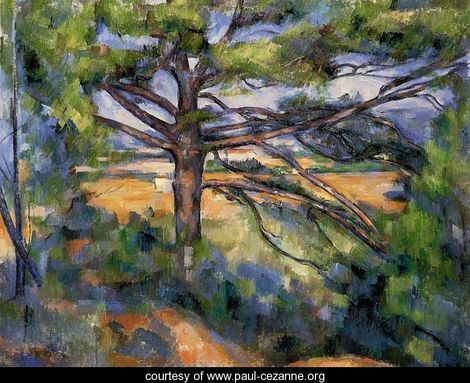 |
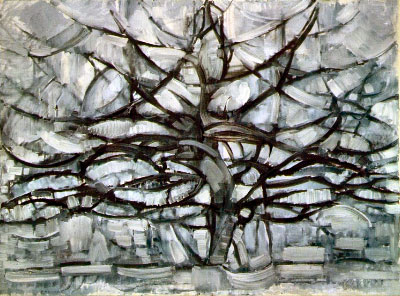 |
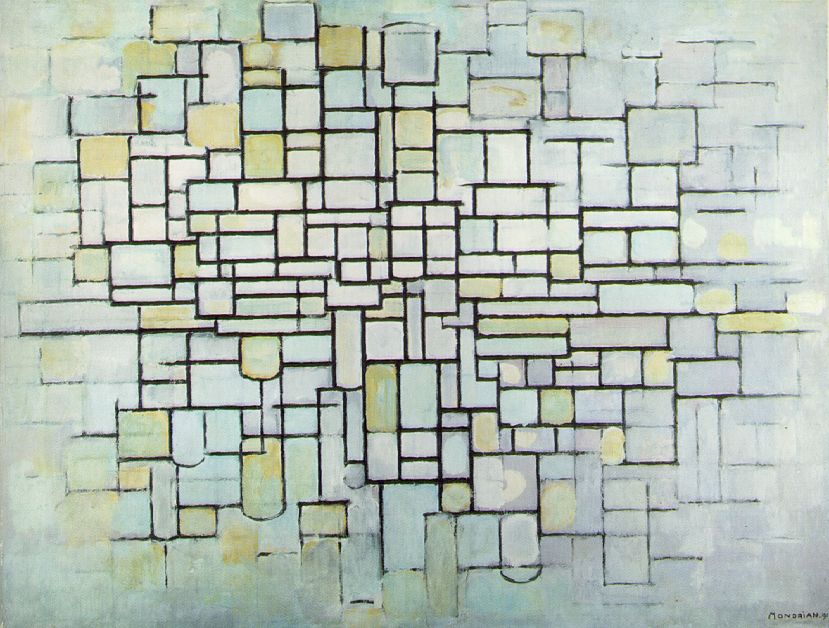 |
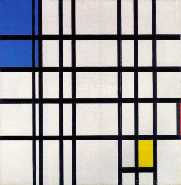 |
|
Cézanne
|
Mondrian
|
Mondrian
|
Mondrian
|
And some thoughts about the brain resulting from it ...
How the brain works: from abstraction to expressionism to realism
 |
 |
 |
 |
|
cognitive unconscious |
cognitive unconscious |
primal story (conscious) |
elaborated story (conscious) |
And maybe a way to think about evolution/science/art together ...
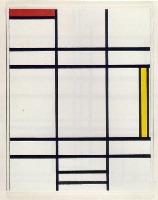 |
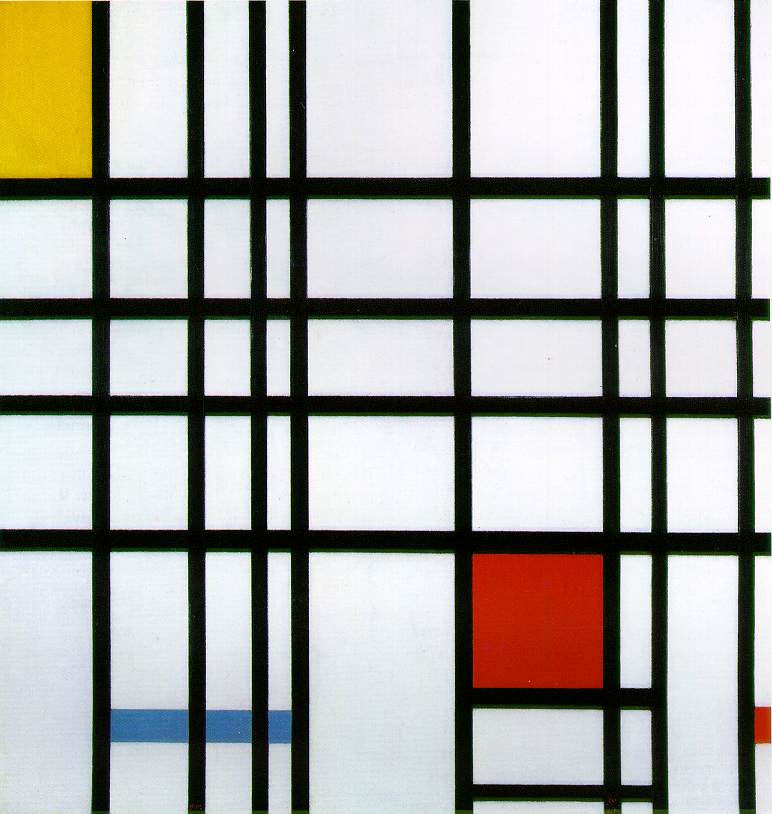 |
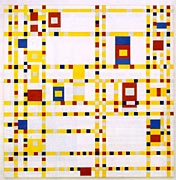 |
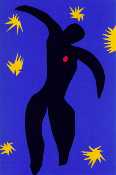 |
 |
 |
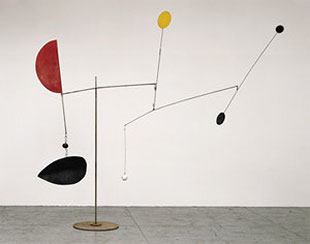 |
| Matisse | Miro | Rothko | Calder |
 |
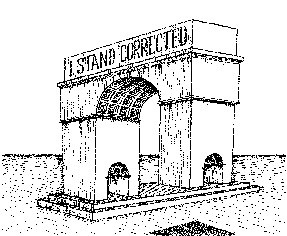 |
| Maurits Escher |
Roger Shepherd |
Evolution/art/science have in common a rootedness in the past as as foundation for conceiving/creating what has not existed in the past? Art/science make use of conscious processes that can interrogate (deconstruct) what has been in order to find new paths to bringing into existence (constructing) what has not yet been?
Some specific issues to keep an eye on ...
One only has to spend some time on the IKEA website to know that chairs take many forms, yet we all recognize some fundamental elements in the one Dr Grobstein drew. How is this kind of collective agreement facilitated, and would it be possible to practice or analyze and and science without it? ... lsteinbe
I like the chair; not because it is a chair, but because it can be whatever I want it to be but the person sitting next to me will still agree it is a chair ... dshanin
art mimics the reality experienced by the individual artist ... The audience must accept the artist’s reality, or the rules of their world, in order to explore it ... jrlewis
I still am not embracing the idea that there is no "purpose" or end goal in sight for any of these subjects. Its extremely disconcerting to think ... that there are any "right" answers. I just don't think that belief system would be conducive to a very comfortable living if one was constantly calling into question even the most basic of things ... traju
Why can't science writing be interesting? ... kgould
We'll see, in general and, in the course, re Whitman and literature.


Comments
Music
Stumbled accross your very impressive page looking for artworks by Miro. But I will be back!
Realism to impressionism to abstraction and back again, in words
Rising to the challenge: is there a trajectory in literature like that in art, with a comparable loop for generativity?
The slings and arrows of outrageous fortune,
Or to take arms against a sea of troubles,
And by opposing end them?
Somewhere ages and ages hence:
Two roads diverged in a yellow wood, and I --
I took the one less travelled by,
and that has made all the difference.
Not A
Therefore B
Does the trajectory invert in the brain?
Abstraction
(unconscious)
Less Elaborated Story
(conscious)
More elaborated story
(conscious)
Not A
Therefore B
Somewhere ages and ages hence:
Two roads diverged in a yellow wood, and I --
I took the one less travelled by,
and that has made all the difference.
The slings and arrows of outrageous fortune,
Or to take arms against a sea of troubles,
And by opposing end them?
Does the deconstruction open up new possibilities for construction?
Not A
Therefore, no closer to an answer than ever
There can be do proof of not A
Therefore no closer to an answer than ever
Not A or B
Therefore, a new possibility C
from little acorns ... ?
Some questions conversations about the sequences, in painting and in language, raising some useful new questions: